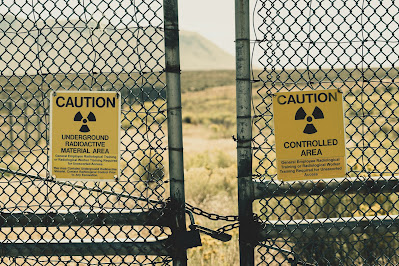Featured
- Get link
- X
- Other Apps
The Origins of the Universe: Discussing theories and evidence for the Big Bang and the early moments of the universe
The Origins of the Universe: Discussing theories and evidence for the Big Bang and the early moments of the universe
The universe is vast and complex, and its origins have fascinated scientists and philosophers for centuries. The most widely accepted theory of the universe's origin is the Big Bang theory, which proposes that the universe began as a single point and has been expanding ever since. In this article, we will explore the evidence and theories behind the Big Bang and the early moments of the universe.The Big Bang Theory
The Big Bang theory proposes that the universe began as a single point, or singularity, that was infinitely hot and dense. This singularity then began to expand rapidly, causing the universe to cool and allowing matter to form. The Big Bang theory is supported by several lines of evidence, including:
- Cosmic Microwave Background Radiation: This is a faint glow of radiation that permeates the entire universe and is thought to be leftover radiation from the Big Bang.
- Redshift: The light from distant galaxies appears to be shifted towards the red end of the spectrum, indicating that they are moving away from us. This is consistent with the idea that the universe is expanding.
- Abundance of Light Elements: The Big Bang theory predicts the abundance of light elements like hydrogen and helium, which is consistent with observations.
The Early Moments of the Universe
The first few moments after the Big Bang were a time of rapid expansion and cooling. During this time, the universe was filled with a hot, dense soup of particles, including quarks, leptons, and photons. As the universe cooled, these particles began to combine to form protons and neutrons, which eventually combined to form the first atomic nuclei.One of the most intriguing aspects of the early universe is the process of cosmic inflation. This is a period of extremely rapid expansion that is thought to have occurred in the first fraction of a second after the Big Bang. Cosmic inflation is supported by observations of the cosmic microwave background radiation, which show that the universe is remarkably uniform on large scales.
The Future of the Universe
The Big Bang theory also has implications for the future of the universe. According to the theory, the universe will continue to expand indefinitely, with galaxies moving farther and farther apart. Eventually, the stars in galaxies will run out of fuel and die, leaving behind cold, dark remnants. Over time, these remnants will merge to form black holes, which will continue to grow by consuming matter.In the very distant future, the universe will become a cold, dark place, with no new stars forming and no sources of light or heat. This is known as the "heat death" of the universe.
Other Theories of the Universe's Origins
While the Big Bang theory is the most widely accepted theory of the universe's origins, there are other theories that have been proposed. One such theory is the steady state theory, which proposes that the universe has always existed and is constantly expanding, with new matter being created to fill in the gaps left by the expansion. However, this theory has fallen out of favor due to a lack of supporting evidence.Another theory is the cyclic model, which proposes that the universe goes through an infinite series of cycles, with each cycle beginning with a Big Bang and ending with a Big Crunch. However, this theory is also controversial and has not been widely accepted.
Conclusion
The origins of the universe are a fascinating and complex topic, and the Big Bang theory has provided a framework for understanding the early moments of the universe. While there are still many unanswered questions about the universe's origins, ongoing research and observations are helping to shed light on this mysterious and awe-inspiring topic.
Citations:
[1] https://www.scientificamerican.com/article/origin-of-the-universe-extreme-physics-special/
[2] https://thesciencebehindit.org/how-did-the-universe-begin-how-will-it-end/
[3] https://www.nationalgeographic.com/science/article/origins-of-the-universe
[4] https://phys.org/news/2015-12-big-theory.html
[5] https://universe.nasa.gov/universe/basics/
[6] https://www.amnh.org/explore/ology/astronomy/how-did-the-universe-begin
Popular Posts

Why are Memories Forgotten?
- Get link
- X
- Other Apps

How is the Colour of a Lobster Determined?
- Get link
- X
- Other Apps

Can Sound Waves Solve Plastic Pollution?
- Get link
- X
- Other Apps

Can Animals Recognise Human Faces?
- Get link
- X
- Other Apps

Do plants sleep? The surprising science of sleep in the plant kingdom
- Get link
- X
- Other Apps

Is the Earth Spinning Faster?
- Get link
- X
- Other Apps

Can Bad Times Actually Improve Your Life? Surprising Benefits of Adversity
- Get link
- X
- Other Apps

Can Brain Implants Make You More Powerful?
- Get link
- X
- Other Apps

The Future and Potential of Nuclear Batteries
- Get link
- X
- Other Apps

Music and its impact on Studying
- Get link
- X
- Other Apps
Popular Posts

Why are Memories Forgotten?
- Get link
- X
- Other Apps

How is the Colour of a Lobster Determined?
- Get link
- X
- Other Apps

Can Sound Waves Solve Plastic Pollution?
- Get link
- X
- Other Apps

Can Animals Recognise Human Faces?
- Get link
- X
- Other Apps

Comments
Post a Comment